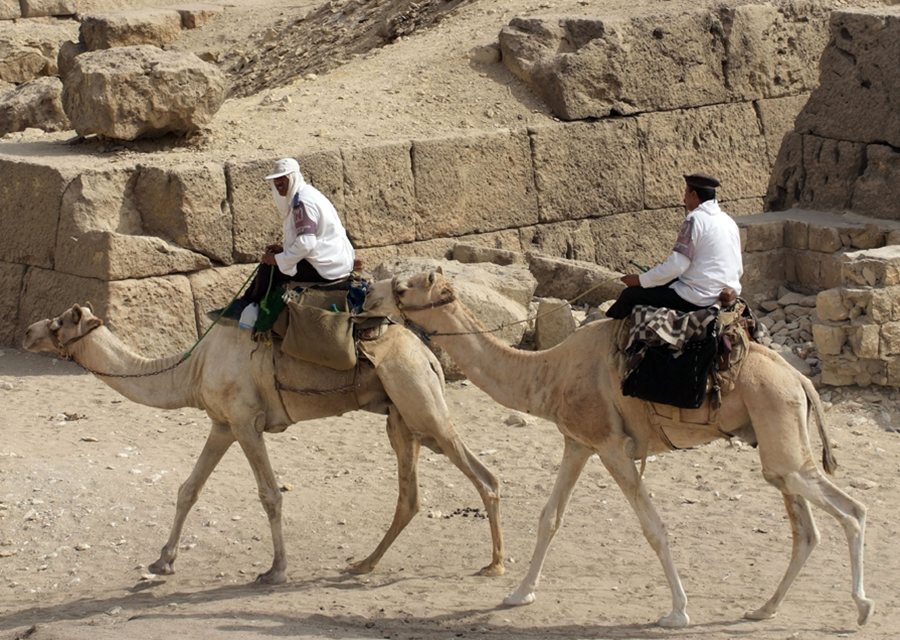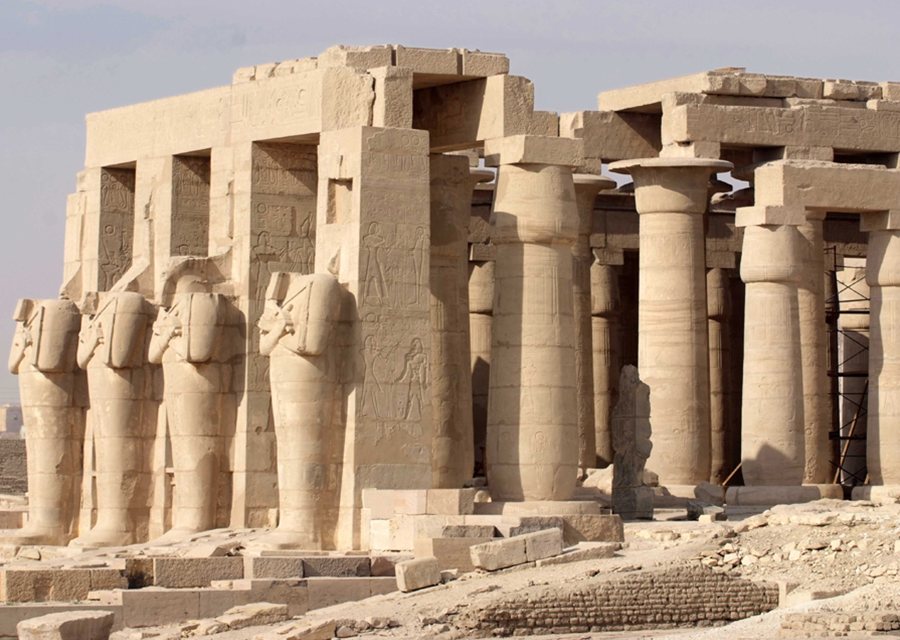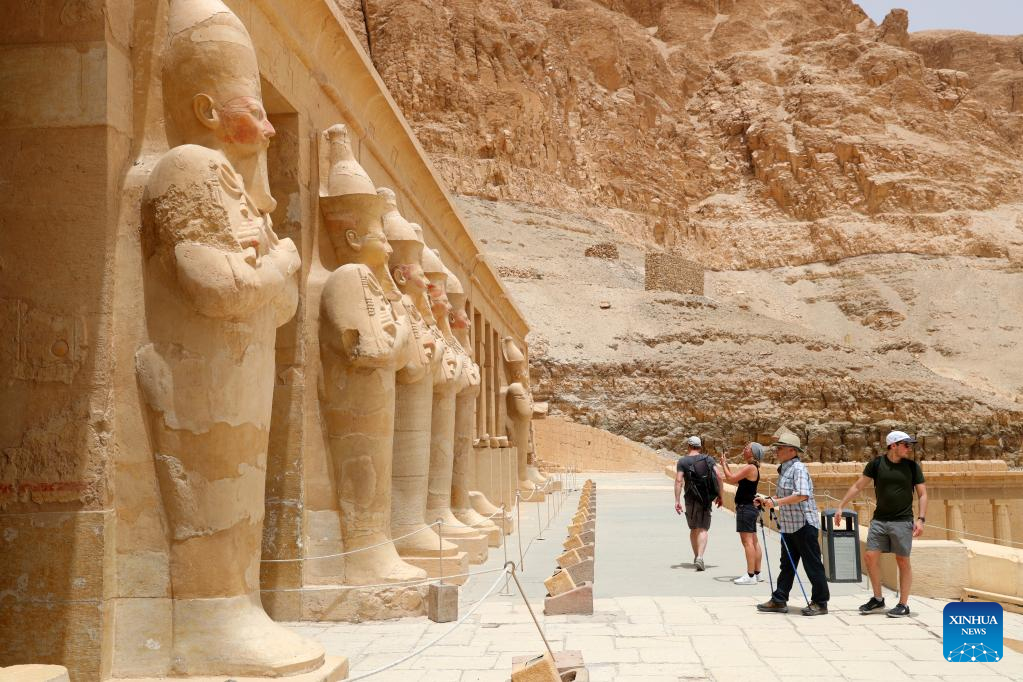The Pyramids travel guide

Egypt’s Pyramids are the oldest of the major Pharaonic sites and, along with the enigmatic Sphinx, also their most iconic. This area close to modern Cairo was the power base of the Old Kingdom, and its rulers were buried in the tombs and Pyramids of Saqqarah and Giza, home to the only remaining Ancient Wonder of the World described by Greek and Roman scholars. For 46 centuries, they have impressed travellers. For more on the Pyramids, read here.

The sole surviving Wonder of the Ancient World, Giza’s Pyramids must rank as the oldest and most visited tourist attraction in history. Archaeologists agree that the Giza pyramids were built within a few hundred years of each other around 2600BC by generations of the same royal family, with the aim of foiling tomb robbers. You can tour the pyramids on foot, or take a camel or horse ride between the main sites.
Great Pyramid of Khufu
The oldest and largest of the three Pyramids is the Great Pyramid of Khufu (Cheops; 2589–2566BC). With its original limestone casing (sadly requisitioned for other buildings over the centuries), the pyramid towered 146.6m (480ft) high. Its height has now been reduced by 9m (30ft).Three chambers were found inside, but all were empty except for Khufu’s sarcophagus.
Inside, the very cramped corridor leads via the Queen’s Chamber into the spectacular 47m (154ft) long Great Gallery, which ends at the King’s Chamber with its pillaged and now empty sarcophagus.
Pyramid of Khafra
Better preserved is the complex around the Pyramid of Khafra (Chephren; 2558–2532BC), Khufu’s son, which lies southwest of his father’s.
Khafra’s pyramid appears taller, but is actually built on higher ground and is slightly smaller, at 136m (447ft). Unusually, the apex is still covered by the original limestone casing. The internal structure of passages is much simpler, although no less claustrophobic, than that of the Great Pyramid, leading to a single chamber containing Khafra’s large granite sarcophagus.
Pyramid of Menkaura
The third of the royal pyramids at Giza was begun by Menkaura (Mycerinus, c.2532–2504BC), the successor of Khafra. By far the smallest, it was apparently left unfinished at Menkaura’s death and hurriedly completed by his son, Shepseskaf, whose own tomb is at Saqqarah. There are signs of haste throughout the complex, even in the pyramid itself. Brick was used to finish off the mortuary temple, causeway and valley temple, though they were begun in limestone and some of the blocks weigh 200 tonnes, showing that the failure to complete it in limestone was not due to a decline in technical mastery.
Solar Boat Museum
Lying behind the Great Pyramid of Khufu is the Solar Boat Museum, housing a cedar-wood boat that was discovered in a pit covered in limestone blocks and mortar near the Great Pyramid in 1954. The boat, which was painstakingly reassembled from 1,200 pieces of wood, is regarded as one of the most important finds of the 20th century and, at 4,600 years old, is one of the oldest boats in existence. Visitors must wear protective footwear to keep sand and other particles that might damage the vessel out of the museum.
The exact purpose of the solar boat is a matter of debate. It was either the funerary boat of Khufu, which carried the Pharaoh’s body to Giza prior to embalming, or it was intended to carry the dead Pharaoh across the sky from east to west to be united with the sun-god Ra.
The Sphinx
Though the face of the Sphinx appears to resemble that of Khafra, the monument is believed to pre-date the rest of the Khafra complex by over 2,600 years. The Sphinx has suffered over the ages: its nose was chiselled off sometime between the 10th and 15th centuries, and part of the fallen beard now resides in the British Museum in London. Named by the Greeks after the mythical half-woman, half-lion monster of ancient times, the origin, purpose and date of the Sphinx remains unknown.
Saqqarah
Giza was neither the first or the only location where pyramids were built: there are about 90 built along the Nile between Giza and the oasis of al-Fayoum. The oldest pyramid is at Saqqarah, situated about an hour south of Cairo.
Saqqarah was the final resting place for the rulers of Memphis and constitutes the largest royal graveyard in Egypt.
Dominating the area is the Step Pyramid, built by architect Imhotep for his ruler King Zoser in about 2670BC, and made up of six brick tiers, reaching a height of 60m (196ft). This is the world's earliest stone monument, the precursor to all Egypt's architectural achievements.
Inside, a shaft was dug 28m (91ft) to the king’s burial chamber. The pyramid is surrounded by a compound representing the king’s palace at Memphis, with beams, columns and bundles of reeds carved onto its facade. Several tombs surrounding the pyramid are decorated with extremely fine murals. Notable examples are the scenes of nobles hunting, feasting and fishing in the tombs of Kagemni and Mereruka (2300BC), next to the ruined pyramid of Teti.
Doctors are shown performing operations in the tomb of Ankh-ma-hor. Near the Rest House and the now-closed Serapeum, the double mastaba (one-storey tomb) of Akhet-hotep and his son Ptah-hotep contains scenes from daily life in Ancient Egypt, including various children’s games. Across the road is the mastaba of Ti, decorated with fish and birds. The mastaba of Princess Idut has exceptional nautical scenes.
Memphis
Just southeast of Saqqarah is Memphis, capital of Egypt until the end of the 6th Dynasty (c.2200bc). Little remains of the city now – but there is a museum with two major relics. First there is a monumental statue of Ramesses II lying prostrate in a covered enclosure. Regarded as the finest statue of this pharaoh ever carved, it can only be viewed properly from the gallery. The fine craftsmanship is apparent in the details of the king's mouth, the muscular shoulders and the sturdy torso. The royal name, in an oblong cartouche, can be seen on the right shoulder, the breast and on the pharaoh's girdle.
The other significant object on display is an alabaster sphinx dating from 1400BC.
Source: insightguides.com
Edited by: Vietnamarab.net






.jpeg)
.jpeg)


.png)



